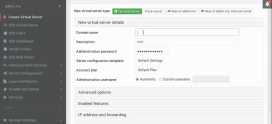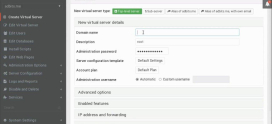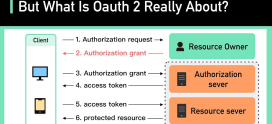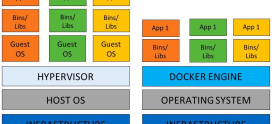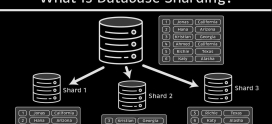
How to Optimize phpMyAdmin Performance for Large Databases in cPanel
Are you feeling overwhelmed by sluggish speeds and unresponsive actions when working with large databases in phpMyAdmin? You’re not alone! Many users find themselves grappling with performance issues, wondering if there’s a magic formula to speed everything up. It can be frustrating when the tools meant to help you feel heavy and unmanageable, particularly in cPanel’s phpMyAdmin where efficiency is key for managing your databases. But don’t worry, you’ve stumbled upon the right guide! We understand your struggles, and in this article, we’ll share practical tips and insights designed to optimize phpMyAdmin’s performance for large databases, making your experience smoother and more efficient.
Let’s journey together towards a more responsive and efficient database management experience. After all, managing large databases shouldn’t feel like navigating a quagmire. So, grab your favorite beverage, and let’s dive into the world of optimizations!
Understanding phpMyAdmin Performance Issues
First things first, let’s get a grip on why phpMyAdmin may feel sluggish when dealing with large databases. It’s similar to trying to find a needle in a haystack; the more data you throw in, the harder it becomes to sift through effectively. There are several culprits behind this lack of performance:
- High Query Volume: If your database is receiving a high number of queries, it can slow down. Imagine trying to have a conversation at a concert!
- Server Resources: Limited CPU and memory resources can also create bottlenecks that leave you waiting.
- Network Latency: Sometimes, it’s not phpMyAdmin at fault; it’s just a matter of distance from the server.
How to Optimize phpMyAdmin for Large Databases
Now that you’re familiar with the common performance issues, let’s dive into practical solutions. Here are several strategies aimed at boosting phpMyAdmin performance.
1. Optimize Your Queries
One of the first steps toward better performance is to optimize the SQL queries you’re running. Just like an athlete trims down on unnecessary weight to run faster, leaner queries can significantly increase response times. Here’s how to do it:
- Use SELECT Statement Wisely: Only select the columns you truly need, instead of using ‘*’.
- Limit Rows: Utilizing the
LIMITclause can help reduce the amount of data retrieved, particularly in larger datasets. - Indexes Matter: Creating indexes on columns that are frequently searched can speed up these queries.
2. Increase PHP Execution Time and Memory Limit
Your phpMyAdmin performance is influenced by the server’s PHP settings. Sometimes, increasing the execution time and memory limits can alleviate bottlenecks:
- In your
php.inifile, findmax_execution_timeand set it to a higher value, such as300. - Set
memory_limit to something more robust like256Mor512Mdepending on your needs and server capabilities.
3. Configure MySQL Settings
Your MySQL database settings play a pivotal role in performance. Adjusting certain parameters can result in a noticeable difference:
- Query Cache: Enabling MySQL’s query cache can help speed up repeated queries.
- InnoDB Buffer Pool: If you’re using InnoDB, consider increasing the buffer pool size, allowing more data to be cached.
4. Utilize phpMyAdmin Configuration Storage
phpMyAdmin has a feature called configuration storage that can help streamline some operations:
- Through configuration storage, you can store frequently used states and parameters. This ultimately speeds up access and response times.
- To set it up, go to
Configuration storagein the phpMyAdmin settings and manage how you want it configured.
5. Regularly Maintain Your Databases
Think of your database like a vehicle; regular maintenance keeps it running smoothly. Here are a few maintenance tasks:
- Optimize Tables: Use the
OPTIMIZE TABLE command to defragment tables and reclaim disk space. - Analyze Tables: Regularly running the
ANALYZE TABLEcommand can help improve query performance by updating the table statistics.
6. Utilize Command Line Over phpMyAdmin
Sometimes, going old-school is the way to speed things up. Using command line tools can be much more efficient than navigating a web interface, especially for large operations. Tools like MySQL CLI can perform operations faster and with fewer resources than phpMyAdmin.
7. Use a Content Delivery Network (CDN)
If your database is heavily reliant on web resources, consider implementing a CDN to help improve load times. A CDN caches website content across multiple servers globally, reducing latency and speeding up data delivery.
Case Study: Improving phpMyAdmin Performance on DarazHost
To illustrate these strategies, let’s examine a hypothetical case involving a mid-sized company that experienced performance draining issues using phpMyAdmin with large datasets on DarazHost. After implementing some of our outlined strategies:
- They optimized their queries, reducing retrieval time by over 30%.
- Increasing their PHP execution time and memory limits saw a significant decline in timeouts.
- They conducted regular maintenance, leading to a smoother database operation overall.
Thanks to these changes, they enjoyed a seamless experience while managing their large databases.
FAQs
Why is phpMyAdmin slow when handling large databases?
phpMyAdmin can become slow due to high query volumes, limited server resources, and network latency.
Can I optimize queries in phpMyAdmin?
Absolutely! You can optimize queries by selecting only necessary columns, limiting rows with the LIMIT clause, and creating indexes on frequently searched columns.
How do I increase PHP execution time in cPanel?
You can increase PHP execution time in cPanel by adjusting your php.ini file settings for max_execution_time and memory_limit.
What MySQL settings can affect performance?
Settings such as enabling the query cache and adjusting the InnoDB buffer pool size can positively impact MySQL performance.
How can I regularly maintain my databases?
You can maintain your databases by regularly optimizing and analyzing tables to keep them running smoothly.
Is using command line tools more efficient than phpMyAdmin?
Yes, command line tools can often be more efficient than phpMyAdmin for larger batch operations.
Can a CDN improve phpMyAdmin performance?
Yes ! A Content Delivery Network (CDN) can enhance phpMyAdmin performance, especially if your database workload includes a lot of web resources. By caching content on servers distributed across various locations, a CDN reduces latency and improves data delivery speed.
Conclusion
Optimizing phpMyAdmin for large databases doesn’t have to be a daunting task. By following the strategies outlined in this guide, you can significantly enhance performance, making your database management experience smoother and more efficient. Remember to regularly maintain your databases, optimize your queries, and adjust your server settings for the best results. Whether it’s through the command line or phpMyAdmin, being proactive about performance will reward you with faster, more responsive database operations.
Now that you have the tools and knowledge, it’s time to implement these optimizations and watch your database performance improve! Happy managing!


